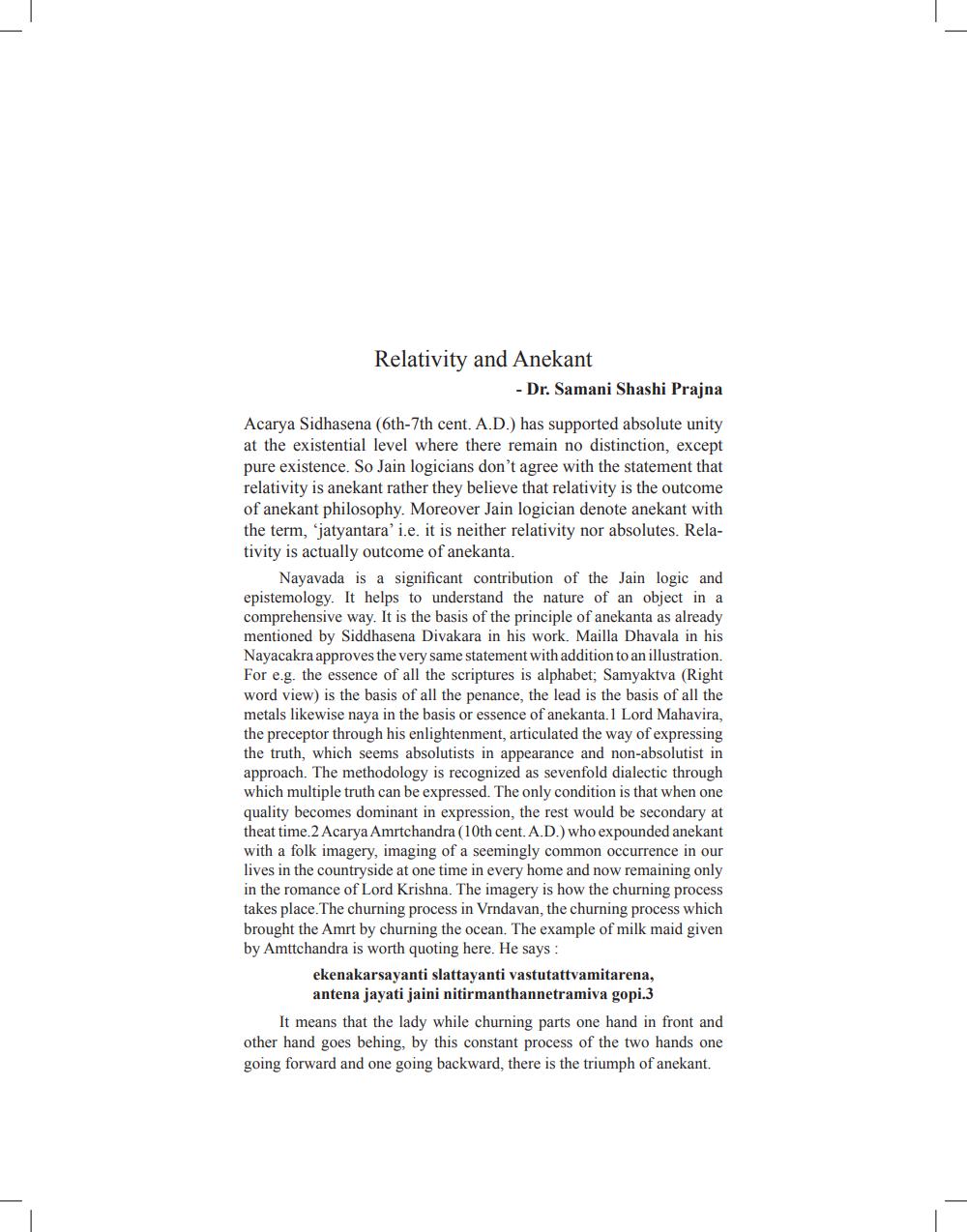________________
Relativity and Anekant
- Dr. Samani Shashi Prajna
Acarya Sidhasena (6th-7th cent. A.D.) has supported absolute unity at the existential level where there remain no distinction, except pure existence. So Jain logicians don't agree with the statement that relativity is anekant rather they believe that relativity is the outcome of anekant philosophy. Moreover Jain logician denote anekant with the term, 'jatyantara' i.e. it is neither relativity nor absolutes. Relativity is actually outcome of anekanta.
Nayavada is a significant contribution of the Jain logic and epistemology. It helps to understand the nature of an object in a comprehensive way. It is the basis of the principle of anekanta as already mentioned by Siddhasena Divakara in his work. Mailla Dhavala in his Nayacakra approves the very same statement with addition to an illustration. For eg. the essence of all the scriptures is alphabet; Samyaktva (Right word view) is the basis of all the penance, the lead is the basis of all the metals likewise naya in the basis or essence of anekanta. 1 Lord Mahavira, the preceptor through his enlightenment, articulated the way of expressing the truth, which seems absolutists in appearance and non-absolutist in approach. The methodology is recognized as sevenfold dialectic through which multiple truth can be expressed. The only condition is that when one quality becomes dominant in expression, the rest would be secondary at theat time.2 Acarya Amrtchandra (10th cent. A.D.) who expounded anekant with a folk imagery, imaging of a seemingly common occurrence in our lives in the countryside at one time in every home and now remaining only in the romance of Lord Krishna. The imagery is how the churning process takes place. The churning process in Vrndavan, the churning process which brought the Amrt by churning the ocean. The example of milk maid given by Amttchandra is worth quoting here. He says:
ekenakarsayanti slattayanti vastutattvamitarena, antena jayati jaini nitirmanthannetramiva gopi.3
It means that the lady while churning parts one hand in front and other hand goes behing, by this constant process of the two hands one going forward and one going backward, there is the triumph of anekant.




